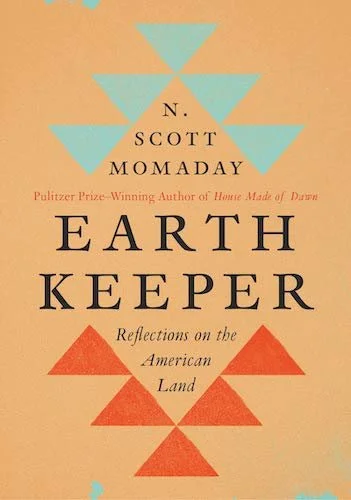Earth Keeper
It’s only natural, cruising down an interstate, to yawn. Mile after mile looks the same. In parts of the Southwest—especially in summer—mile after mile doesn’t just look the same; it looks lifeless. Empty, even.
But looks can be deceiving. As Elizabeth Barrett Browning would remind us, “Earth's crammed with heaven, And every common bush afire with God: But only he who sees takes off his shoes.”
Earth Keeper: Reflections on the American Land (Harper) by N. Scott Momaday is a very short book about seeing—indeed, beholding—the splendor of Creation. Burning bushes are everywhere, Momaday says (in so many words), if only we have the eyes to see them. And not just burning bushes: there are trees and rocks and rivers, hawks and bears and dragonflies too, all on fire, each in search of witnesses.
“If you stand still long enough to observe carefully the things around you, you will find beauty, and you will know wonder,” Momaday writes. “If you see a leaf carried along on the flow of a river, you might ponder its journey. Where did it begin, and where will it end? What will be the story of its passage?”
Born in Oklahoma and raised on Apache, Navajo, and Pueblo reservations across the Southwest, Momaday writes of the land with a striking sense of ownership that wouldn’t necessarily occur to me. Not in the sense of people owning the land, mind you, but in the sense of us belonging—in some profound and mysterious way—to the earth that has nurtured us.
I can hear the nervous interjections from some of you: Where exactly are we headed with this line of thought? This isn’t some Mother Earth thing, is it?
Well, maybe, maybe not. I can’t help but think of Genesis 2:7, where we read, “Then the Lord God formed a man from the dust of the ground and breathed into his nostrils the breath of life, and the man became a living being.” And then there’s Genesis 3:19, spoken to us every Ash Wednesday: “dust you are and to dust you will return.” (It’s not for nothing that the Latin word for “earth” and “soil” is humus, from which we get the word human.)
So yes, the connection between humans and the earth is real, profound, and mysterious—even if interpretations of those connections will vary. Let’s just say this: if some are (possibly) prone to make too much of these connections, I speak personally when I say others of us are (definitely) in danger of never appreciating them at all.
This book is a love letter to the landscapes Momaday holds dear, and all the creatures therein. And it’s a call to action, to cherish what’s fragile before it’s too late. Momaday writes:
“The waters tell of time. Always rivers run upon the earth and quench its thirst. Bright water carries our burdens across long distances. Without water we, and all that we know, would wither and die. We measure time by the flow of water as it passes us by. But in truth it is we who pass through time. Once I traveled on a great river through a canyon. The walls of the canyon were so old as to be timeless. There came a sunlit rain, and a double rainbow arched the river. There was mystery and meaning in my passage. I beheld things that others had beheld thousands of years ago. The earth is a place of wonder and beauty.”
Oh to live in such a way that we could tell friends of traveling “on a great river through a canyon.” Oh that generations to come might have the chance to experience the same thing.

